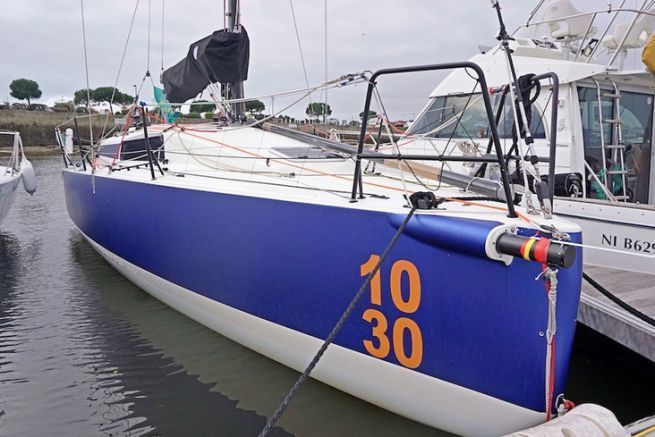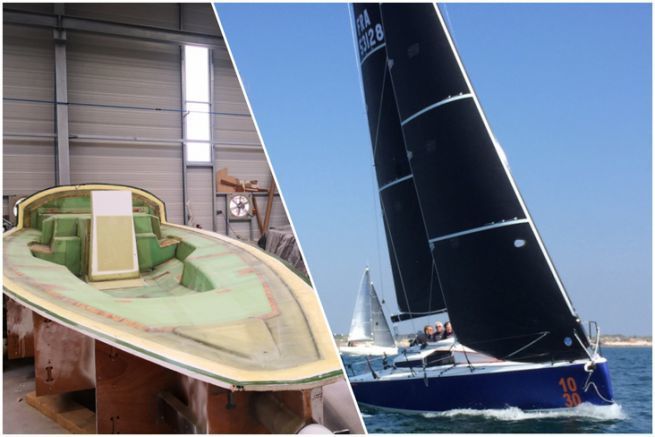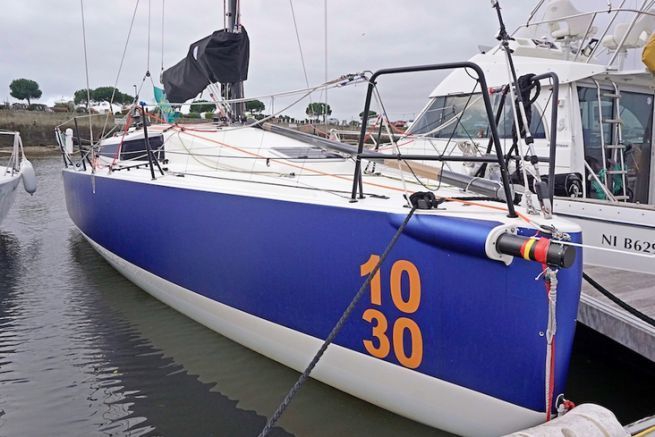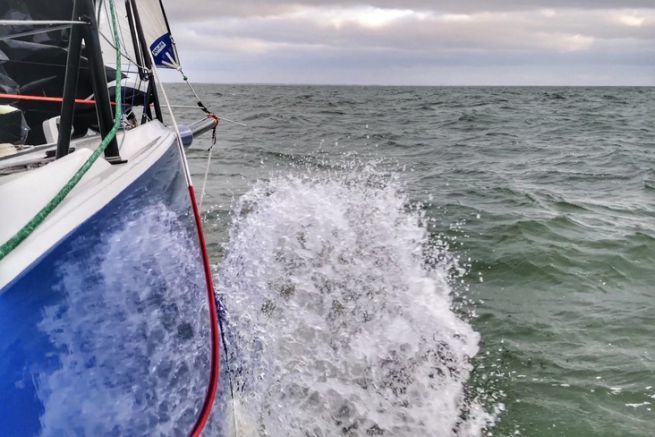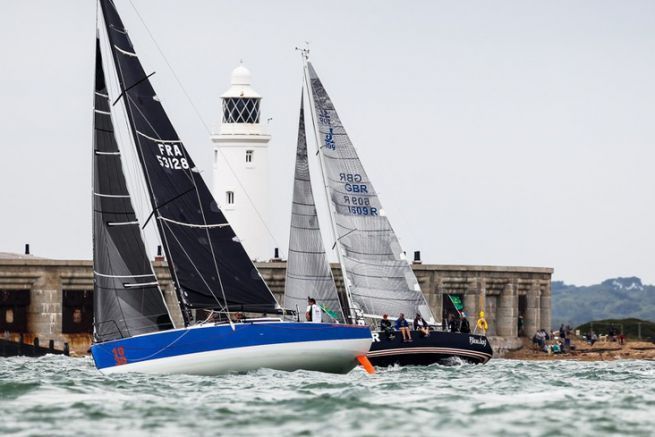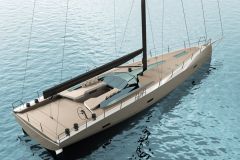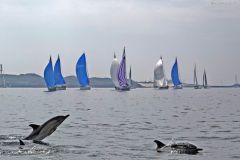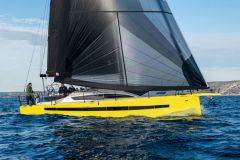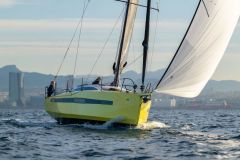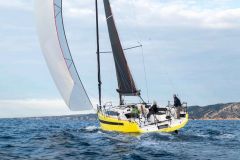A functional deck plan
The recessed main beam gives width to the open cockpit. On the aft deck, there is a large and deep locker. This compartment provides access to the steering systems as well as the autopilot cylinder, ideal for maintenance and inspection. When cruising, or on a short getaway, it will allow you to store a dinghy and fenders.
The cockpit is a model of ergonomics for double-handed sailing, with all the mainsail adjustments within easy reach of the helmsman. The crew member in charge of maneuvers will also have all the necessary references to adjust the sails.
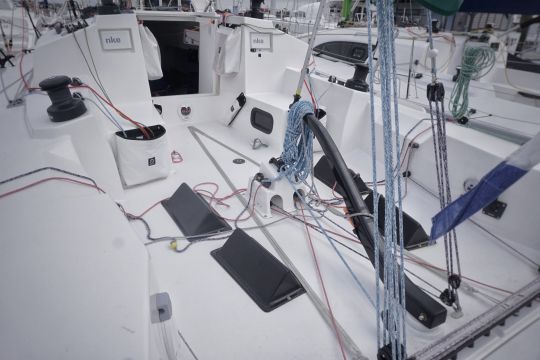
sophia Von Fernbach

sophia Von Fernbach
Depending on the circumstances, there are several places for the crew to sit. The back wedged in the aft balcony downwind, sitting next to the helmsman to regulate the sheet, abseiling in the lines or on one of the small benches behind the roof. You can't really lie down for a nap, but you are protected from the weather and you stay close to the adjustments.
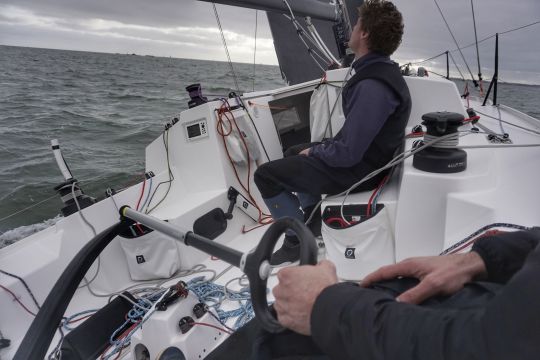
sophia Von Fernbach
These watchtowers narrow the maneuvering area to make it easy to get into position and limit the range of movement. Taller people may find the winches a bit low, but you can get into good positions to work efficiently. There are pockets at the end of the boat everywhere, which makes it possible to organize life on board and keep the cockpit clear (if you take the time to do so).
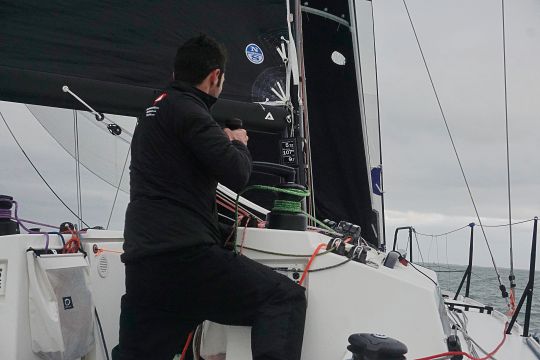
sophia Von Fernbach
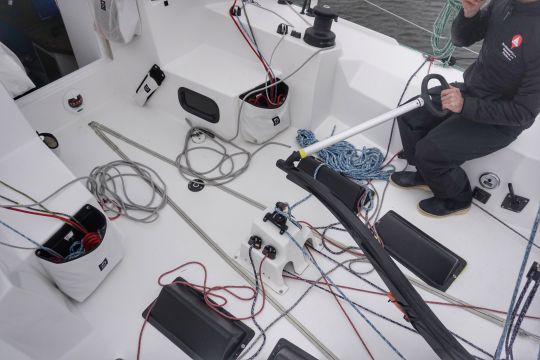
sophia Von Fernbach

sophia Von Fernbach
The wide roof protects the cockpit area from the spray and is not too rounded, allowing easy movement. With its frontal glazing, the roof becomes narrower at the level of the solent rail, where the gangways widen pleasantly. At the bow, we have the pleasant surprise of finding an anchor locker. It reinforces the versatility of this boat capable of reaching the Fastnet or making a trip to the islands.
Bright and functional interior
The companionway of the JPK 1030 is wide enough to avoid bumping your hips and to take out the spinnaker bags without any hitch. Below deck, the space appears open and functional. For a racing boat, the interior layout is quite pleasant. It is bright and airy. The roof, with its retracted side plexis, contributes to the impression of space and lets in a lot of light. The feeling of volume is accentuated by the roof that extends far forward and the wide open mast bulkhead.
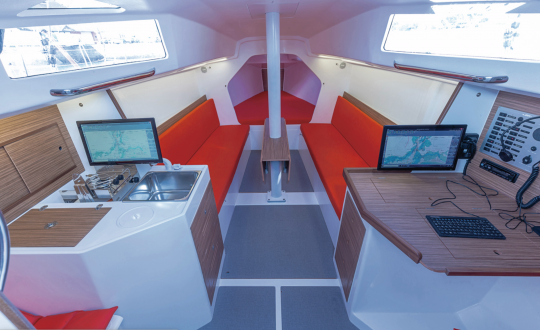
The front peak is dedicated to the only double berth on board. The sleeping and seating foams are covered with a PVC coating that does not fear humidity. At the berth, moving around will be secured by the roof handrails and the sponge that crosses the table. Once in port, the square table flaps allow four people to sit at ease. As for the bench seats, 2 m long, they will welcome the rest of the sailors after dinner or between watches.
The originality of the saloon is the presence of rest stations on the port and starboard sides. Two cushioned seats are placed on either side of the companionway, allowing you to rest while keeping an eye on the PC screen (which concentrates most of the chart table). On the boat we tested, there was a screen on each side, and on the galley side, the cooler lid makes an excellent mouse pad.
On the starboard side is what you might call a "real" chart table, i.e. a desk and its multiple storage compartments. And it is a computer screen with its routing software that is very much on the navigation table. On the other side, there is the electrical panel and the navigation instruments.
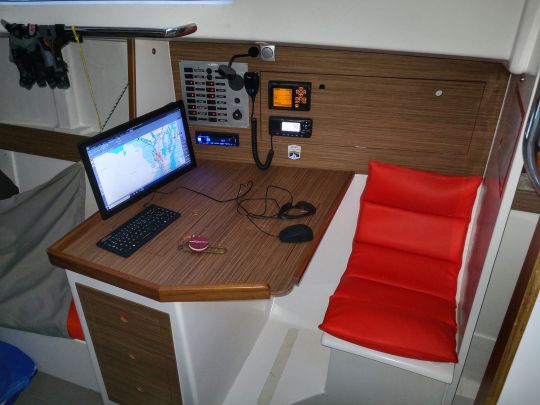
sophia Von Fernbach
On the port side is the galley with a gimbaled stove, a sink, a cooler and some storage space. It is the minimum necessary for a stay at sea, whether it is for a race or a trip.

sophia Von Fernbach
As is often the case on racing boats, the engine, a Volvo Saildrive D1-20, is very accessible. The lowering steps are easily retracted to make the necessary controls.
Under the cockpit, gimbals allow you to rest comfortably on the padded sails. The cabins seem a bit narrow because of the large ballast tanks (300 l). On the floor, the huge ballast transfer pipe crosses the cabins on both sides. At the back of the starboard cabin, you can access to a toilet, the place is cramped, but, in some circumstances, it can help.
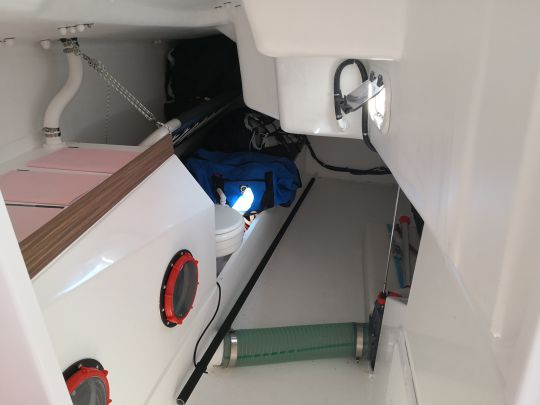
sophia Von Fernbach
